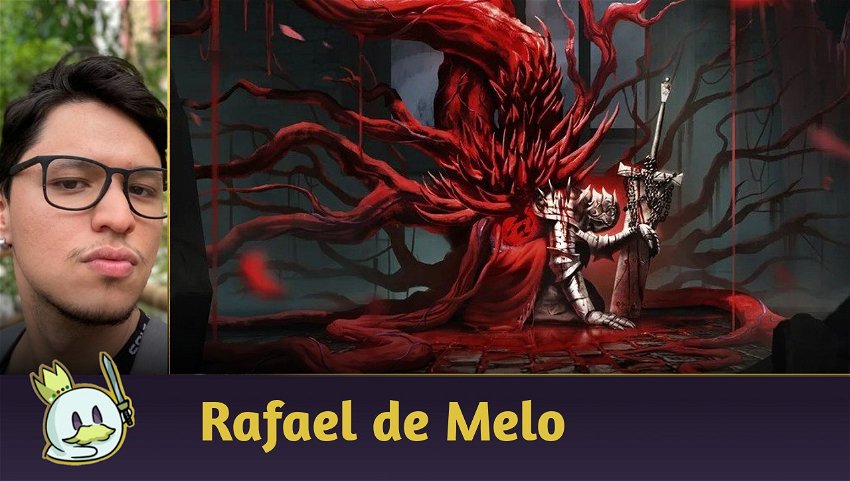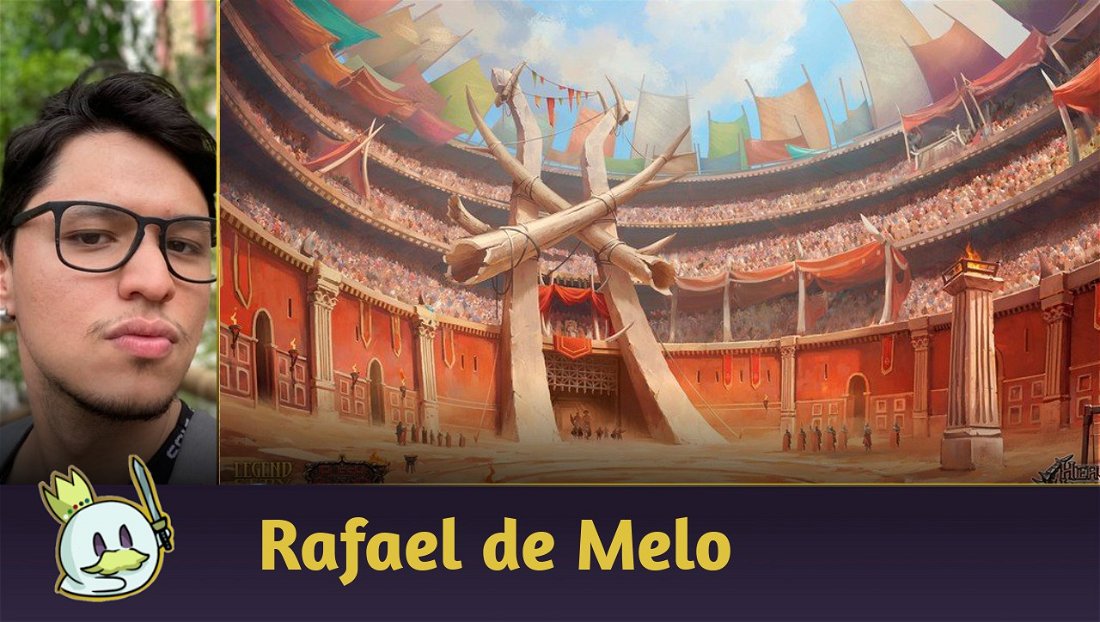Introduction
Heavy Hitters is about to be released, and, in a meta without Iyslander, Stormbind, new horizons seem to appear - both for new and older heroes. However, the meta hasn't always been healthy as it is nowadays.

In 2023, Oldhim, Grandfather of Eternity strongly dominated the beginning of the year, Lexi, Livewire dominated the middle months of the year, and Iyslander, Stormbind dominated the final months - which made this year one of the most complicated years to the game in terms of meta. Due to these heroes, we've also had several overshadowed releases and new cards that never found their home.
Let's analyze what happened and see what we can expect from this game's future!
About Power Creep
The Power Creep term is known across several games; not only TCGs, but also MOBAs, for instance. Power Creep describes a phenomenon that happens when a new element in a certain game makes another older element obsolete.
This term is heavily discussed in Magic: the Gathering, for instance, due to the release of cards that are stronger and stronger, such as Sheoldred, the Apocalypse, Atraxa, Grand Unifer and Ragavan, Nimble Pilferer, but it can also be applied to League of Legends when we compare Jinx (an older champion) with Aphelios or Samira (more recent champions that have more abilities).
In the TCG world, Power Creep is always a concern among players - both because it makes cards that are loved by players obsolete and because it makes entire decks obsolete - forcing players to either invest in a new deck entirely, or even stop playing in a certain format's competitive circuit.
Currently, we are seeing the opposite movement in Flesh and Blood: instead of getting cards that are stronger and stronger, we are seeing cards that are weaker. But how did that happen? Was there any apparent reason?
To understand Power Creep in Flesh and Blood, we must start by its very beginning.
Flesh and Blood's Beginnings
We can classify this game's beginning as the period containing the first three sets: Welcome to Rathe, Arcane Rising
and Crucible of War
. In the first sets, we were introduced to the eight original heroes, each representing what their respective classes tried to execute.

When we analyze these classes, we notice a game that is clearly centered around friction. Apart from Kano, Dracai of Aether, which brings an entirely different goal, the other heroes tried to win the game through Combat Chain attacks - be it with Attack Actions or their respective weapons.
Another feature is that having natural Go Again (that means, recovering Action Points effortlessly) was quite rare. Even though this mechanic was common for Ninja, the other classes needed to think of ways to give their attacks Go Again.
Dash, Inventor Extraordinaire would subject itself to a deck restriction and lose cards, Dorinthea Ironsong needed to work so that Dawnblade would hit an opponent (besides using cards that provided Go Again), Rhinar, Reckless Rampage would have to roll the dice well with Scabskin Leathers, etc. This would enable not only slower games but also more balanced games between the heroes at the time.
FaB 1.0
However, something changed in this game's balancing between Monarch and Uprising
, a moment we call FaB 1.0.
This moment in the game was widely known for the increase in Power Creep, with many problematic heroes. With a few exceptions, we can see some similarities between them, even though their classes are different: they all, currently, have reached Living Legend status, and almost all of them can easily access Action Points.

If we analyze them thoroughly, we can see all these heroes had a very low cost (or even zero cost) to recover Action Points - be it through the hero themselves, their weapon or equipment.
- Prism, Sculptor of Arc Light: through Luminaris, it would grant Go Again to all your Illusionist attacks and create a gigantic board state with their auras. Besides this, the Spectra ability would deny the opponent's Action Point if they wanted to break one of its auras;
- Chane, Bound by Shadow: this Runeblade's ability would not only give Go Again to attacks that shouldn't have, but also created a "second hand" at the exile zone that increased as the game went on;
- Lexi, Livewire: with Voltaire, Strike Twice and the Outsiders cards, this Ranger would grant Go Again to your arrows (the ones with relevant on-hit effects) for just one resource and end the turn with some disruption, be it through arrows or Ice cards;
- Briar, Warden of Thorns: with the ability to create Embodiment of Lightning or the several Lightning cards, this hero could create long Combat Chains, and, by accessing Spellbound Creepers, could remove Action Points at instant speed;
- Bravo, Star of the Show: this hero had this same mechanic through their ability by revealing the three elements in hand and partially denying the opponent's turn with Ice cards and disruptive attacks.
- Iyslander, Stormbind their Ice cards and ability could deny the opponent's Action Point, creating several cards and disruptive plays at instant speed;
- Oldhim, Grandfather of Eternity: this Guardian is the only exception to this rule. Its power is in being, to this day, the best fatigue deck in this game - working with a strategy that would stretch the game until the opponent had no more cards in their deck.
Tales of Aria: Testing FaB's Limit

Tales of Aria is a set remembered by many as one of the strongest sets in this game (if not the strongest). Starring Briar, Lexi and Oldhim, this set focused on elementals not only brought to us three of the most powerful heroes in this game, but also several strong cards, and others that are banned to this day.
Awakening, Duskblade, Amulet of Ice (3), Ball Lightning (1) and Winter's Wail were some of the cards that were banned at this time or are even banned today. Besides this, Briar was the first hero to get their ability corrected, Duskblade, banned before this set's official release. Absolutely all heroes in this set have reached Living Legend status in Classic Constructed.
Even though the company admitted this set was the result of carelessness and lack of testing, Tales of Aria's ideology extended to Everfest, which, even though it had cards that weren't as strong as the cards before it, it had the same ideology in cards like Bravo, Star of the Show and Iyslander (which, later on, got heavy support to become viable).
In Uprising, the talent idea and the easy access to Action Points once again remained: Iyslander could deny the opponent's Action Points and Dromai, Ash Artist would easily grant Go Again to her Dragons for an almost irrelevant cost.
FaB 2.0

From Dynasty onward, it was noticeable that the cards' Power Level had been reduced. Even though a new class (Assassin) was released to the game with Arakni, Huntsman, he wasn't as powerful as the other heroes that had been released so far.
Not only was the new class's Power Level reduced, but they also reduced the Power Level of the mechanics introduced for the other classes. Some of them, like the Shield mechanic for Guardian, Crouching Tiger for Ninja, Spectral Shield for Illusionist, Aim Counter for Ranger and Hyper Driver for Mechanologist (before Bright Lights), never saw any competitive play at the time, and very few cards actually changed decks.
A new era in Flesh and Blood was to come, and it prevailed through the entirety of 2023: FaB 2.0.
Reigning In the Power Level
"FaB 2.0" was an article published by LSS explaining a mentality change for the entire game as a whole. Besides the changes such as the end of the first edition boxes, sets with a white border (that is, 100% reprints), and the bigger focus on casual formats, one change that wasn't listed in this article, but was noticed in the next few sets, was reducing the cards' Power Level.

The next set, Outsiders, carried on with this philosophy. Riptide, Lurker of the Deep and Arakni, Solitary Confinement have reduced health points to compensate for their abilities and Uzuri, Switchblade can create unfair, surprise attacks for the opponents at the cost of this class not having any Action Points.
Even though this set put Azalea, Ace in the Hole and Katsu, the Wanderer back into the meta, the new heroes didn't shine properly in any format at a first glance. Very few cards were used in competitive formats (such as Codex of Frailty) and the old heroes still dominated the meta.
If Outsiders seemed to keep the reduced Power Level from the previous set, Dusk Till Dawn only confirmed it. With two new heroes, Prism, Awakener of Sol and Vynnset, Iron Maiden, this change was clearly consolidated.

Even though they promised to revive the Light and Shadow talents, the new heroes didn't come close to the old heroes, Prism, Sculptor of Arc Light and Chane, Bound by Shadow. The new Prism, even though she has a much shorter lifespan, doesn't have Luminaris, which reduces the importance of her auras significantly and removes any relevant cadence, besides also removing the easy access to Go Again in her attacks. Meanwhile, Vynnset, Iron Maiden has a goal more geared towards Go-Tall, ignoring almost all other cards once used by Chane, Bound by Shadow, and also doesn't have cadenced attacks.
It is true that Levia, Shadowborn Abomination and Ser Boltyn, Breaker of Dawn were quite better, but the two new heroes above were completely overshadowed, both because of their cards' low power level and the dominance of other older heroes, like Lexi, Livewire, for instance.
Bright Lights: A New Goal for the Game
The Bright Lights release brought new goals: a set focused on just one class, slots dedicated to cards for other classes and new heroes - however, two of them stood out in tournaments and can show what are the company's plans for the next sets.

Even though Mechanologist already has Go Again "naturally", Dash I/O elevates the concept of Action Points through the items played from the top of your deck. However, all this power comes at a cost: items that don't block and weird hands that can disrupt your plan, besides reduced health points.
Maxx 'The Hype' Nitro has nothing special, but this hero revives the Hyper Driver (1) mechanic from the past and gives it a new meaning, reusing several old cards, particularly Construct Nitro Mechanoid. Even though it seems quite consistent, the fact Mechanoid can be exiled through boost adds a certain risk to this deck.
A new message seemed to be clear: we'll have heroes with strong mechanics, but also some restrictions so that they aren't too strong - be it by removing their health points, restricting their decks, or adding risk to their plans.
Besides this, thanks to the Expansion slot introduced in Bright Lights, it is possible to revive some heroes that need some sort of support. Tome of Imperial Flame is an example, but we had more attempts with Warband of Bellona and Intoxicating Shot.
Final Words
Even though the Power Level was clearly reduced, and simpler cards were released, this didn't make new heroes useless. We had a final match at the Calling: Melbourne battled between Dash I/O and Uzuri, Switchblade (two new heroes), Maxx 'The Hype' Nitro also brought good results at the World Championship and Vynnset won a Battle Hardened tournament.
A new era is coming, and, just like the early days, we're moving towards longer, friction-focused games - and that doesn't mean we'll have boring heroes or weaker heroes, but rather games that are more fun to play.
Thank you for reading. See you next time!














— Comentarios 0
, Reacciones 1
Se el primero en comentar